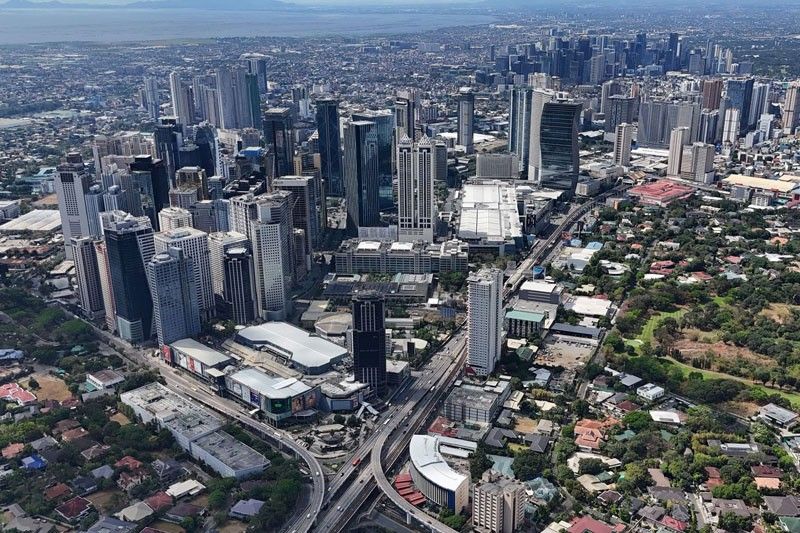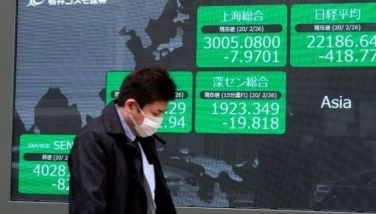Economy seen growing by 6.2 percent this year

MANILA, Philippines — Philippine economic expansion may pick up in the coming months, with growth seen averaging 6.2 percent this year, well within the government’s six to seven percent target, according to BMI Country Risk & Industry Research.
The economy grew by 5.7 percent in the first quarter from 5.5 percent in the fourth quarter of 2023.
“The result is largely consistent with our 6.2 percent full-year growth forecast, which we maintain. Labor market conditions have tightened, and we still expect looser monetary policy to lift economic activity over the coming quarters,” BMI said.
The latest forecast is well within the six to seven percent GDP growth target penned by economic managers through the Development Budget Coordination Committee.
According to BMI, domestic demand in the Philippines struggled in the first quarter as private consumption grew by 4.6 percent, the slowest household spending growth rate since the 2.6 percent in the third quarter of 2010, excluding the pandemic years.
BMI noted the deceleration in gross capital formation as well. Fixed capital formation grew by 1.3 percent in the first quarter, slower than the 12.8-percent growth in the same period of 2023.
“The data suggest investment has taken a hit due to high borrowing costs. But we expect the central bank to start easing in July, which would bring some small measure of relief,” BMI said.
The Bangko Sentral ng Pilipinas (BSP) is expected to deliver its first rate cut in July, the same month that BMI sees the US Federal Reserve beginning policy easing.
The BSP’s Monetary Board kept its benchmark rate steady at a near 17-year high of 6.50 percent for a fourth straight meeting in April. The BSP has emerged as the most aggressive central bank in the region after raising interest rates by 450 basis points from May 2022 to October 2023 to tame inflation and stabilize the peso.
BMI said the BSP could delay its rate cut given upside risks to inflation such as warmer temperatures due to El Niño, which could affect food production and push prices up.
If the BSP keeps rates higher for longer, the Philippine economy may then post a weaker economic growth than what BMI currently forecasts.
BMI also said that labor market conditions have been improving in the Philippines, as the jobless rate fell to 3.9 percent in March from 4.5 percent in January.
“We see scope for (the unemployment rate) to fall further, which should support household income growth,” BMI said.
Meanwhile, United Kingdom-based think tank Pantheon Macroeconomics upgraded its growth forecast for the Philippines following the firmer than expected outturn in the first quarter.
“But we still see the economic performance sliding versus 2023; our revised projection is 5.2 percent, up from 4.8 percent previously, but still representing a drop from 5.5 percent last year,” Pantheon Macroeconomics chief emerging Asia economist Miguel Chanco and senior Asia economist Moorthy Krshnan said.
However, the latest forecast of Pantheon Macroeconomics is also below the government’s revised six to seven percent growth target.
With private consumption still struggling, Chanco and Krshnan expect economic growth this year to be slower than last year’s.
Household consumption in the first quarter rose 4.6 percent, the slowest since 2010, excluding the pandemic years.
Pantheon Macroeconomics expects household consumption growth to drop to 5.1 percent this year from the previous year’s 5.6 percent.
Chanco and Krshnan said the current pace of household spending “already encapsulates the substantial help it’s getting from an unsustainable borrowing binge.”
They said remittance growth is unlikely to provide much support as consumer confidence is weakening and finances remain fragile, with savings hit multiple times since 2020.
While Pantheon Macroeconomics sees fixed investment growth outperforming private consumption this year, it is expected to moderate to six percent from the previous year’s 8.2 percent.
“Much of the expected continued outperformance of capital expenditures is simply a function of the fact that the post-COVID catch-up remains incomplete,” Chanco and Krshnan said.
The economists said the cushion provided by government spending in the first quarter is not reliable from one quarter to the next as authorities are struggling to keep their recently revised 5.6 percent of GDP budget deficit goal for the year.
- Latest
- Trending
























